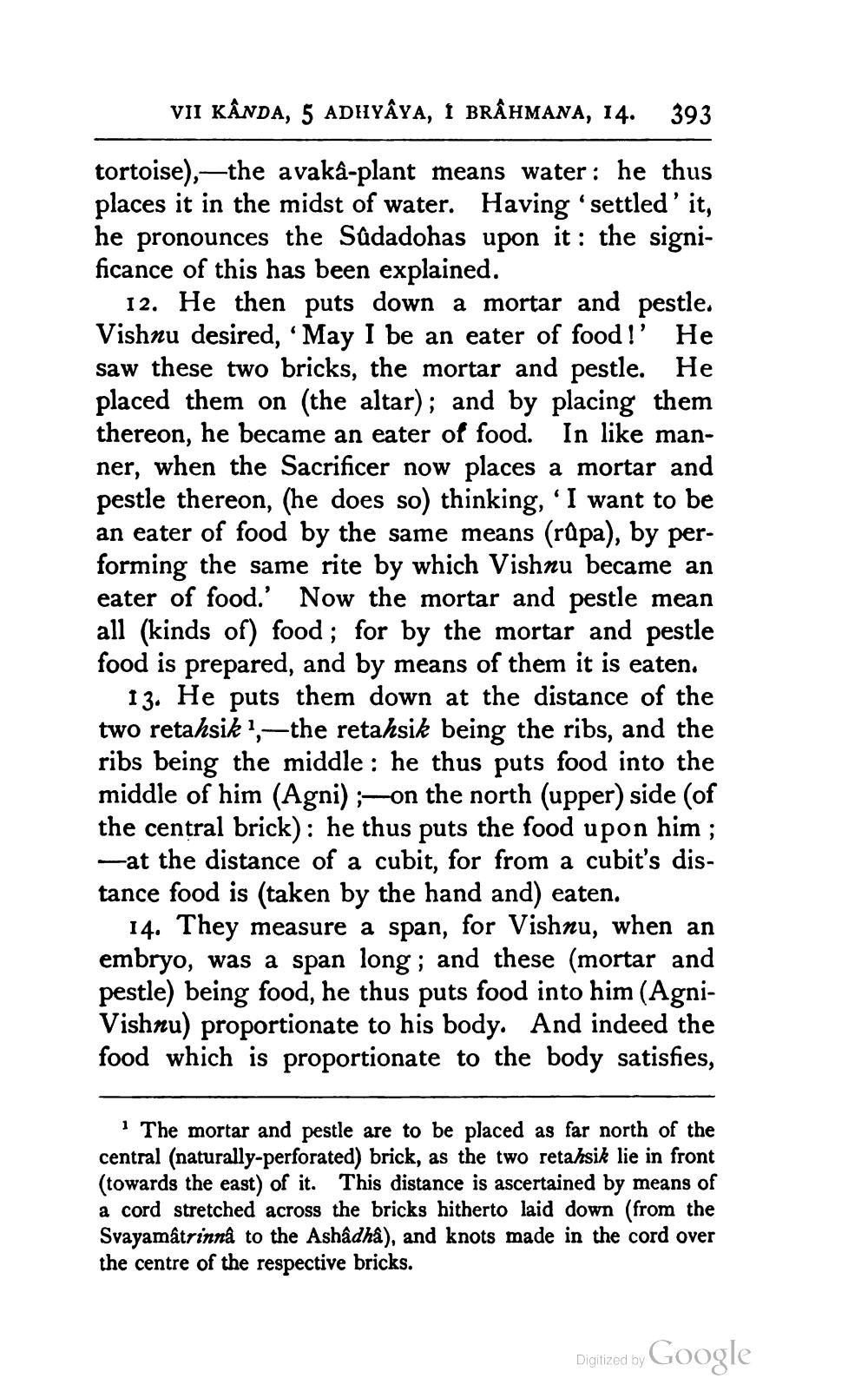________________
VII KÂNDA, 5 ADHYAYA, I BRÂHMANA, 14.
393
tortoise),—the avaka-plant means water : he thus places it in the midst of water. Having 'settled' it, he pronounces the Sadadohas upon it: the significance of this has been explained.
12. He then puts down a mortar and pestle. Vishnu desired, “May I be an eater of food!' He saw these two bricks, the mortar and pestle. He placed them on (the altar); and by placing them thereon, he became an eater of food. In like manner, when the Sacrificer now places a mortar and pestle thereon, (he does so) thinking, 'I want to be an eater of food by the same means (rupa), by performing the same rite by which Vishnu became an eater of food.' Now the mortar and pestle mean all (kinds of) food; for by the mortar and pestle food is prepared, and by means of them it is eaten.
13. He puts them down at the distance of the two retahsik 1,—the retahsik being the ribs, and the ribs being the middle: he thus puts food into the middle of him (Agni) ;-on the north (upper) side (of the central brick): he thus puts the food upon him ; -at the distance of a cubit, for from a cubit's distance food is (taken by the hand and) eaten.
14. They measure a span, for Vishnu, when an embryo, was a span long; and these (mortar and pestle) being food, he thus puts food into him (AgniVishnu) proportionate to his body. And indeed the food which is proportionate to the body satisfies,
1 The mortar and pestle are to be placed as far north of the central (naturally-perforated) brick, as the two retahsik lie in front (towards the east) of it. This distance is ascertained by means of a cord stretched across the bricks hitherto laid down (from the Svayamâtrinnà to the Ashâdhá), and knots made in the cord over the centre of the respective bricks.
Digitized by Google




